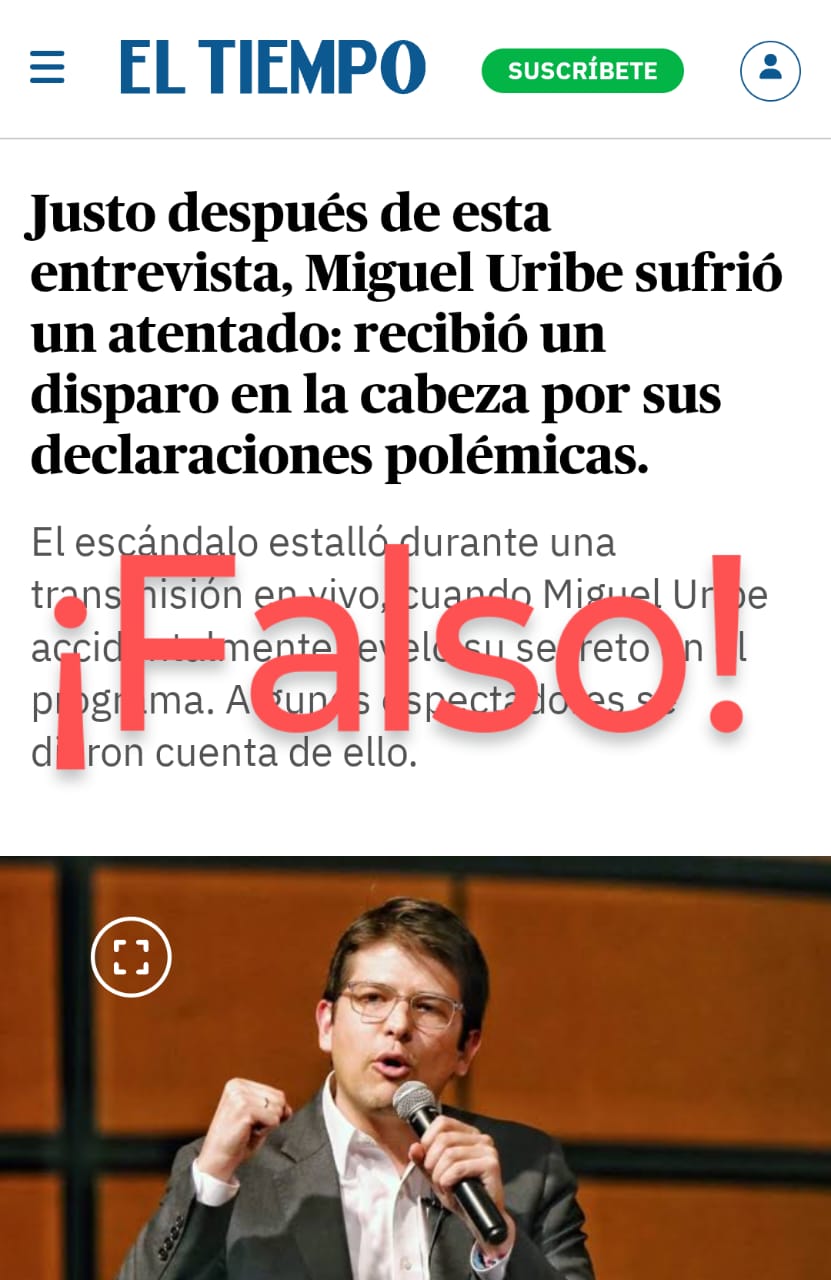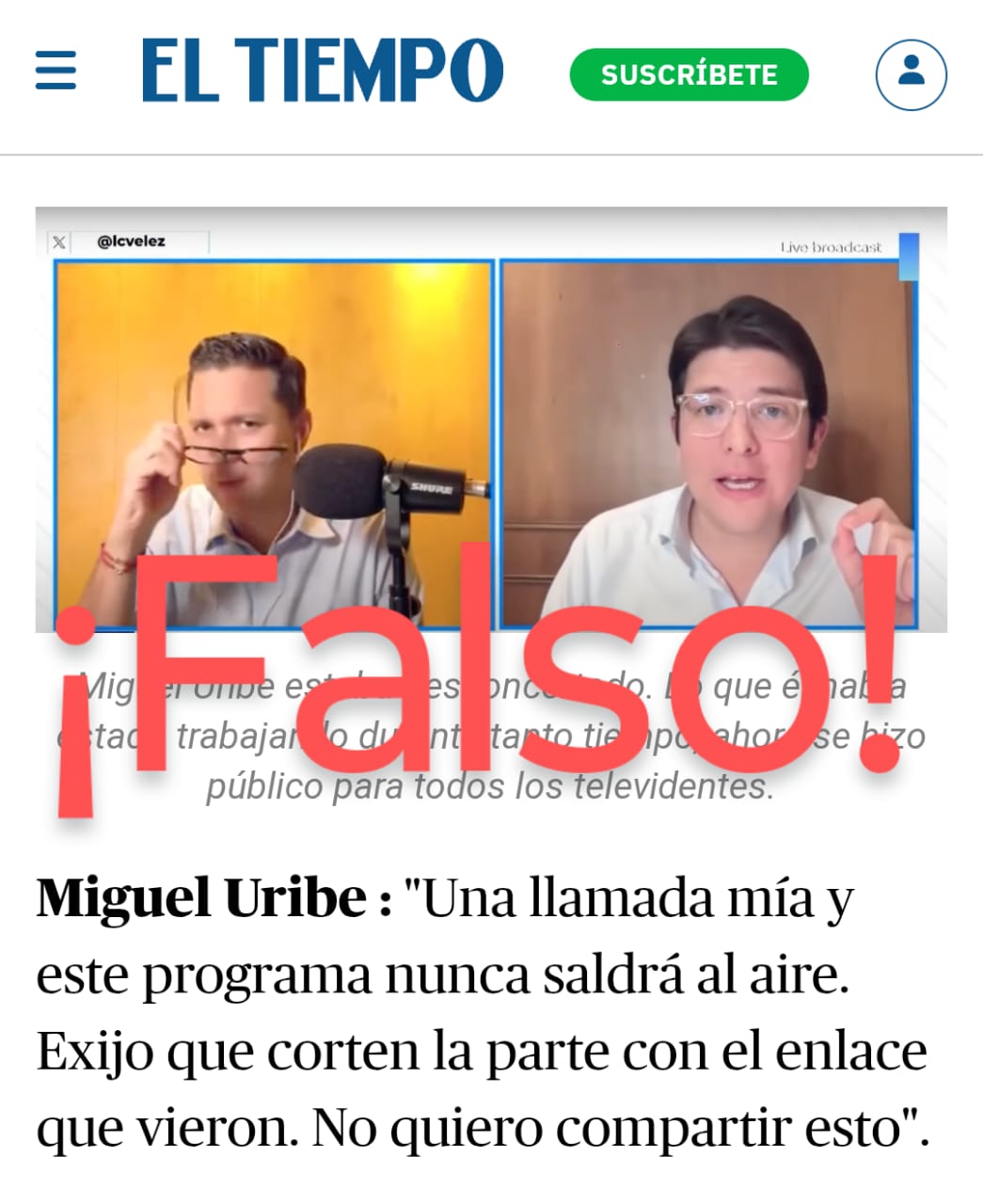Walletix Ecológico, a scam in Colombia that allows X to use Miguel Uribe's image and attack to steal

A fake website pretending to be EL TIEMPO publishes misleading information to promote investments in a cryptocurrency exchange platform called Walletix Ecológico. Therefore, we recommend you exercise caution, as your money and personal information may end up in the hands of unscrupulous individuals.
This is the fake scam 
Miguel Uribe. Photo: Provided
Misusing elements of EL TIEMPO's brand identity, the scammers recreated a website to spread a fictitious story about a supposed interview conducted by journalist Luis Carlos Vélez with Senator Miguel Uribe Turbay.
The fictitious article states that, supposedly, through a live broadcast, "Miguel Uribe accidentally revealed his secret."

Miguel Uribe fake. Photo: Provided
This newspaper reiterates that this content is false, unrealistic, and devoid of any foundation. Furthermore, it fraudulently uses some of EL TIEMPO's graphic resources, such as its logo.
Thus, this article has never been published on any of this news organization's channels.
Tips to avoid falling for fake items Always carefully check the URL before clicking. Scammers use various tools to trick you and gain your trust, creating fake pages with URLs that don't correspond to reality. The only page for this site is ELTIEMPO.COM.
Also, keep in mind the following recommendations:
- Check basic aspects such as spelling and grammar. Be wary of articles with large titles and all-caps.
- Note the coherence of the informative presentation.
- Be wary if the article suddenly jumps to exaggerated conclusions, if there is no attributed source, or if everything is anonymous.
- Ask yourself if the information, video, or image provides the minimum necessary context.
- Question the motivation behind the content, who is sharing it, why, and the source. A family member or friend may share something without realizing it's fake.
- You can search the internet for the headline or main idea of the article in question to see if it appears in other news sources. Be suspicious if only one source is available and it happens to be the only one that presents that "information."
- Also, check the portal hosting the news. Look in the "about us" or "about" section to get an idea of what type of site you're visiting.
- Check if the article has links, but they don't lead where they should. Sometimes, disinformation schemes use the visual appearance of another well-known media outlet, but modify the URL.
- Try to go to the sources of the information, regardless of whether it's the media itself, a prominent figure, or an official institution. These types of "breaking news" usually have specific records.
- If they are images or videos, try looking for other places on the web where they are hosted.
- If the video appears to have come from a verified account, check the real account to verify it.
- In the case of photographs, you can download an image and perform a "reverse search" on Google. Using this Image feature, you'll find photographs similar to the sample and can explore , for example, whether it appears in an article with an older date or has been used in other contexts.
- You can also view a document or image's metadata to verify its origin, modifications, and corresponding dates.
LATEST NEWS EDITORIAL
eltiempo





